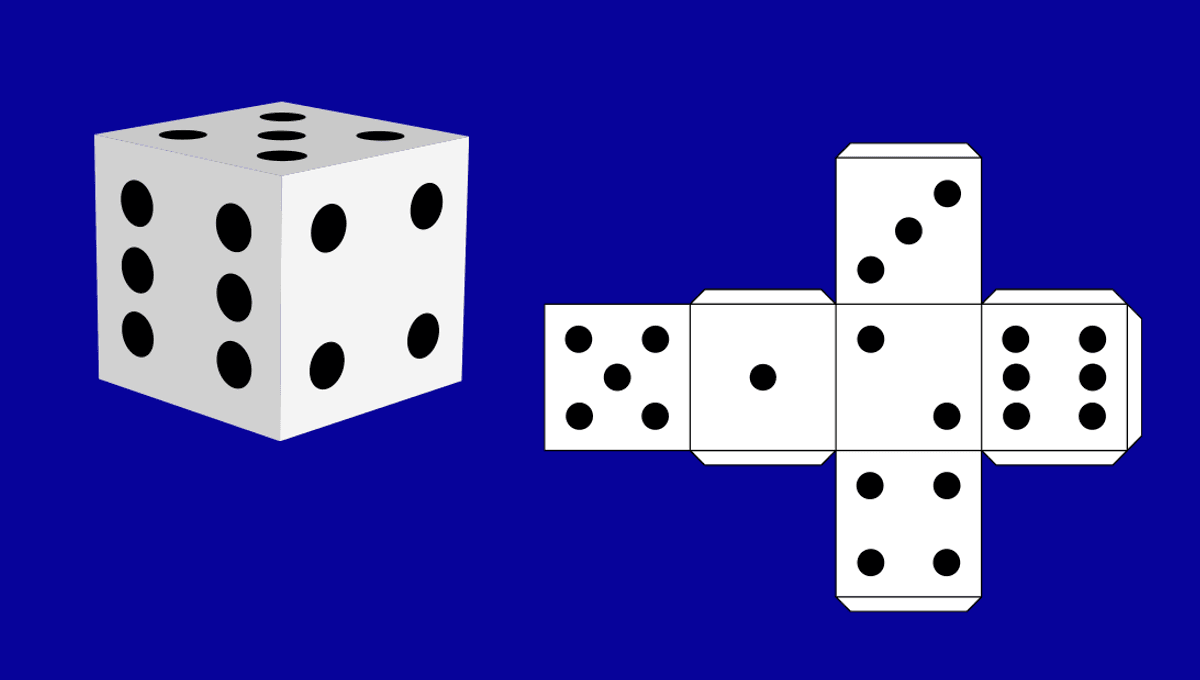
It’s one of those hidden-in-plain-sight rules of life: the opposite faces of standard dice always sum to seven. Six is opposite one; five is opposite two; three is opposite four. It’s just how it is. But have you ever wondered why?
It wasn’t always such a given. High and late medieval dice were often designed with opposite sides having consecutive values – one would be opposite two, three opposite four, and five opposite six – and in Ancient Sumer and Egypt, the pattern of the pips was basically a toss-up. But somehow, today, the “sevens” configuration is what we landed on.
Ask a well-known search engine why that is, and you may find explanations that talk about spreading the numbers out as evenly as possible, so as to keep the throw of the dice random. Mathematically, though, this doesn’t really hold water. After all, there’s a blanket one-sixth chance of any value being rolled – the position of the values doesn’t change that in any way.
However, while we’re on the math of it all, there is one advantage to the standard seven-based setup: in this world of mass-produced knick-knackery, it does mean that minor production errors in the dice’s dimensions won’t affect the expected value – that is, the average result.
It’s a neat little tidbit of probability, but is it the reason for the pattern? Well, probably not. It’s the kind of thing that’s important when you’re thinking about averaging the outcome of 10,000 rolls – but when you’re actually playing a game with pals, the fact that the expected value is still 3.5 isn’t as important as the fact that rolling a six is apparently impossible.
Plus, there’s the fact that this particular setup goes back a long time – as in, thousands of years. “The first cubic dice with the canonical numbering system appeared in the Egyptian New Kingdom, in the 16th century BC,” wrote osteoarchaeologist Hans Christian Küchelmann in 2018.
“The Greeks adopted it in the 1st millennium [BCE],” he noted, and the convention was “followed relatively strictly in Greek and Roman culture.”
Now, this was way before people had come up with concepts like “probability” or “accounting for manufacturing defects”, so it’s unlikely that they chose the add-to-seven pattern for that reason. Even the more rudimentary “dice” that researchers have found – made from knucklebones, and therefore wildly non-regular in their probabilities – aren’t numbered in such a way that would fully support this theory.
Which kind of just leaves… aesthetic preference. The “sevens” figuration “is the only possibility to arrange the numbers 1 to 6 in pairs symmetrically. Any other arrangement will result in different sums for the opposite sides,” pointed out Küchelmann. “And, of course, seven is a prime number and thus of special mathematical significance.”
It might sound frivolous to us, but the Greeks were well known to be heavily into that kind of stuff. “While in today’s dice games the least probable combination is the most valuable, in antique times the most harmonic combination […] was the highest valued,” Küchelmann wrote. “Maybe this applies also to the numbering system.”
Whatever the original cause for the setup, though, one thing’s for sure: it got really popular. In fact, by the end of the Middle Ages there were actual laws against creating dice with any other configuration – which is probably why it’s so universal today.
In other words, the reason that opposite faces of dice add to seven is – and basically always has been – “because we’ve always done it that way”. As Küchelmann sums it up: “An unknown person back in Greek Antiquity created the canonical design of dice, it became a rule and a tradition, [and] the violation of [it] would have been regarded as an offense to the order of the game.”
All “explainer” articles are confirmed by fact checkers to be correct at time of publishing. Text, images, and links may be edited, removed, or added to at a later date to keep information current.
Source Link: Why Do Opposite Faces On Dice Always Add To Seven?